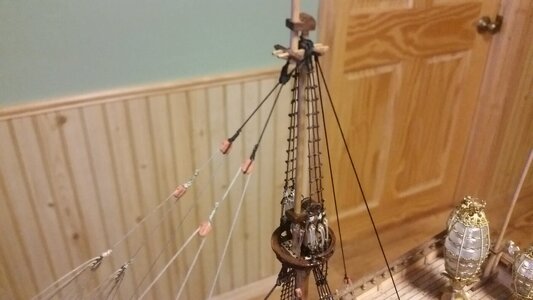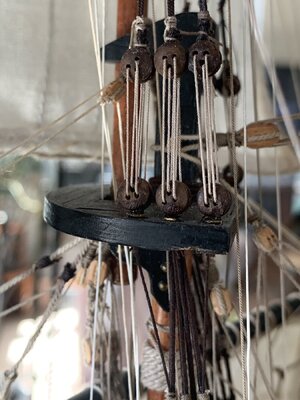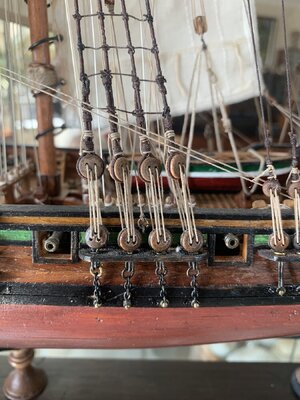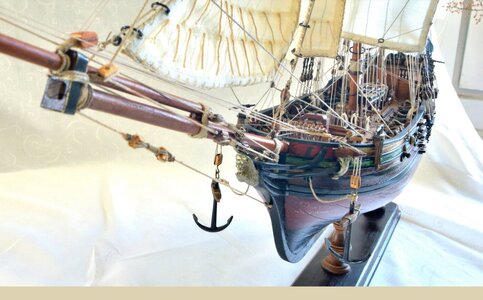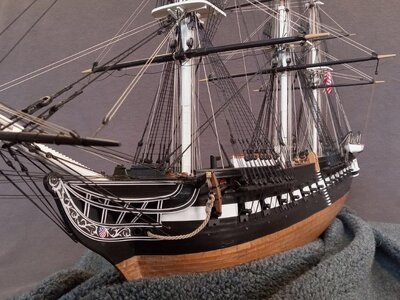Here is how the mizzen topmast shrouds were rigged on
La Couronne using 3mm triangular deadeyes.
for the futtock shrouds and mizzen topmast shrouds above them, 0.30mm black thread (75% poly, 25% cotton) was used, not wire.
Futtock shrouds and lower deadeyes are rigged first. The futtock shrouds are tied around the deadeyes, the passed through small holes in the railings of the tops, over the edge of the deck of the top, and are tied to the futtock staff on the mizzen course ratlines below.
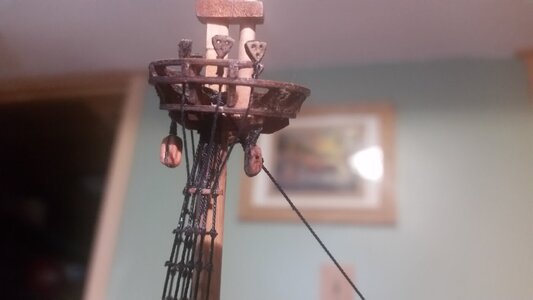
A pair of shrouds is looped and siezed at the topgallant masthead, starting with the port side as shown below.
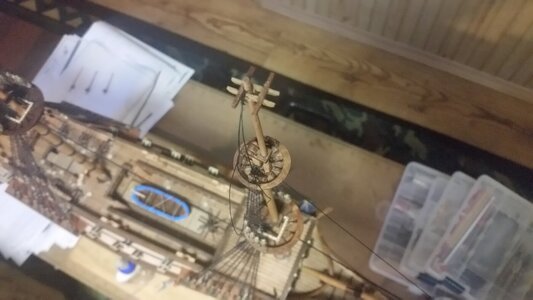
When attaching the upper deadeye to each shroud, the length of the shroud is determined by using a deadeye spacing tool, placed temporarilt between the deadeyes, while the shroud is tensioned and tied to the upper deadeye. The smallest tool on the far left is for 3mm deadeyes on the mizzen mast and those on the sprit topmast. The tools were made using deadeyes and wire formed with pliers and locked together with glue. Wire staples are made to form the prongs on which the deadeyes to be rigged are fitted.
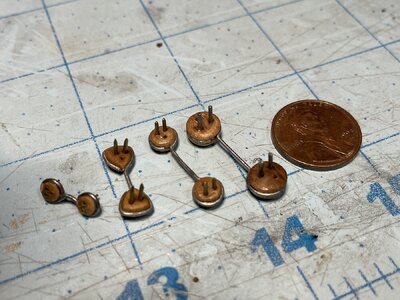
You can see the tool behind the upper and lower deadeye whose shroud is being tensioned around the upper deadeye, and locked in place with a small bit of CA glue.
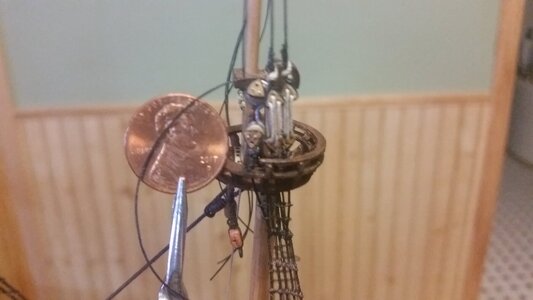
The deadeyes are now lashed with tan colored lanyards, and if you got the length of each shroud correct, the upper deadeyes should be in line with each other, and the tension of the shrouds should be mildly taut by adjusting the lashings, about the same tension for all the shrouds. Ready for ratlining.
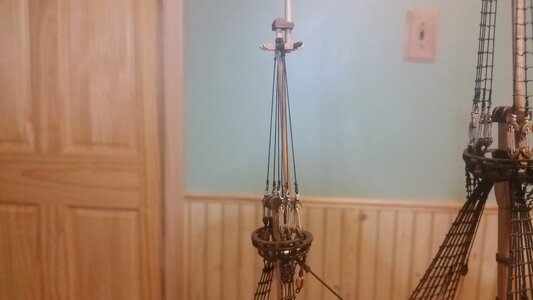
After ratlines are done. Good luck with your rigging. 3mm deadeyes are very small and take plenty of patience to get them rigged.
